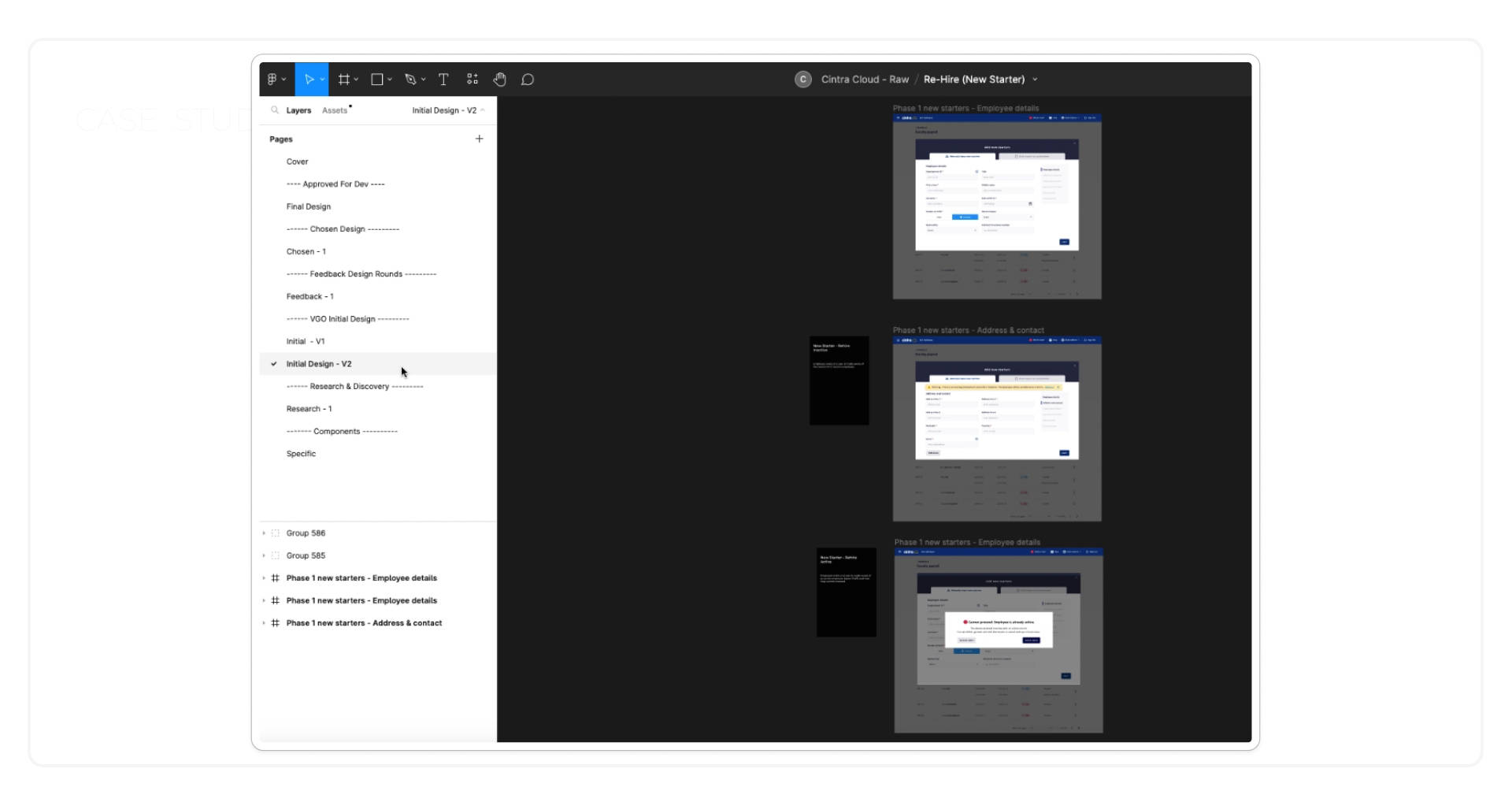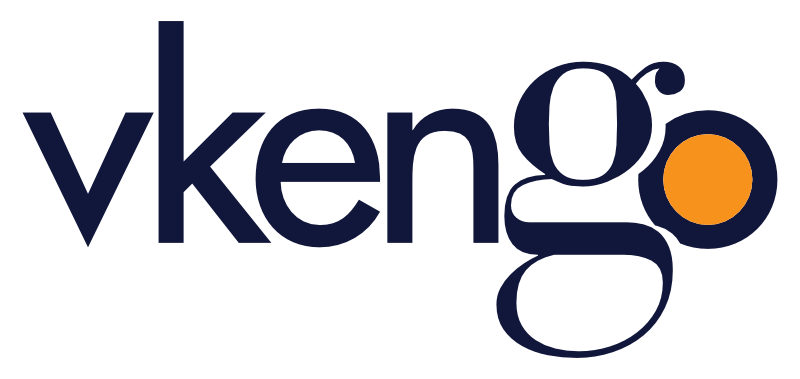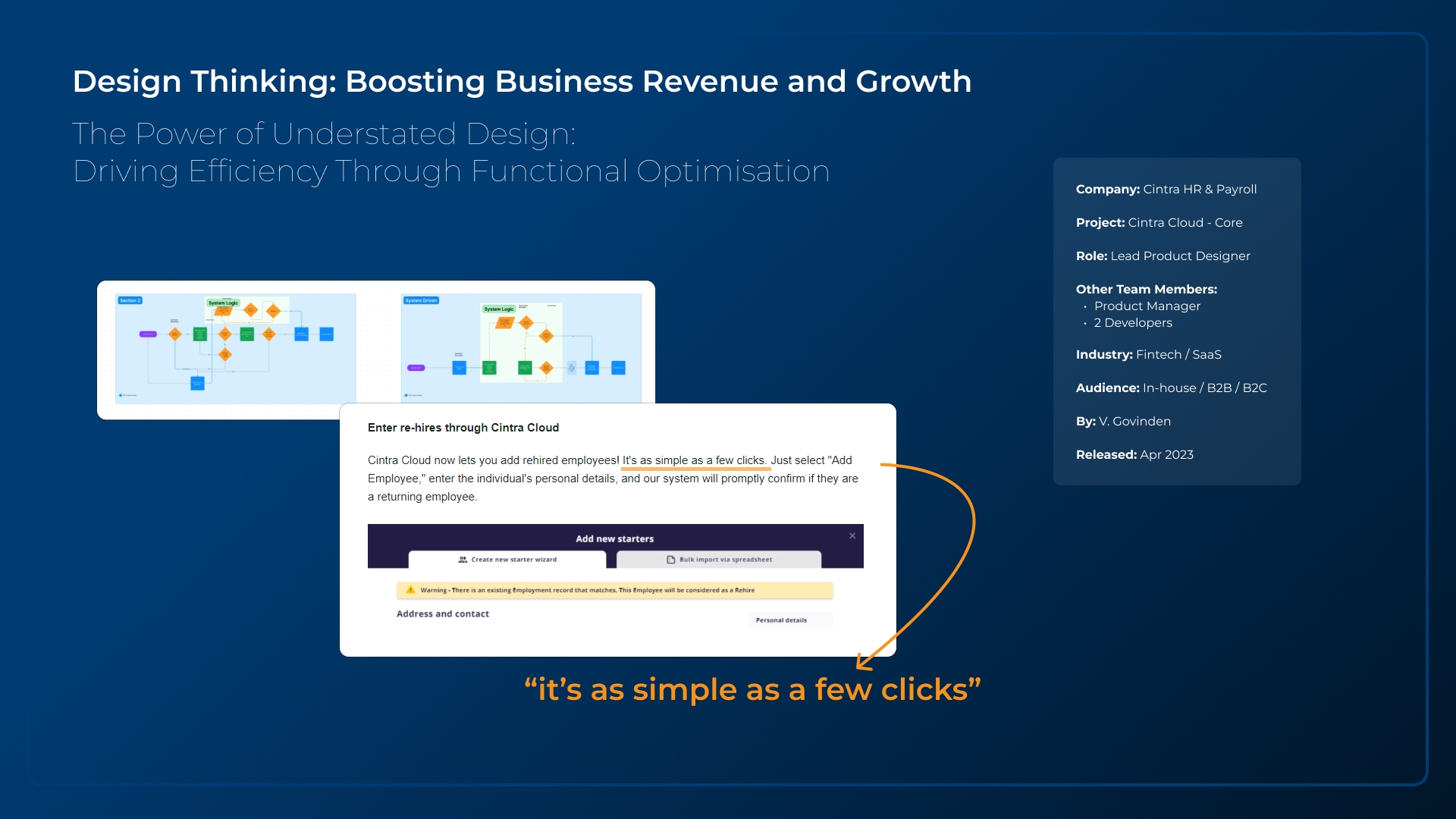A Case Study in Design Thinking and Efficiency
Introduction - The Power of Quite Design
This case study illustrates the application of design thinking principles to address a critical user pain point within the Cintra Cloud platform. While many high-profile design projects emphasise visual impact, this project exemplifies the power of "quiet design" - a solution characterised by its simplicity, efficiency, and profound impact on user experience. The Rehire feature, though subtle in its execution, delivered significant improvements in user satisfaction, reduced support costs, and optimised resource allocation. This case study will highlight the design thinking process employed to achieve these outcomes, with a particular emphasis on the importance of collaboration in achieving a user-centric solution.
The Problem
Cintra Cloud users faced significant frustration and wasted time when attempting to rehire seasonal or temporary employees. The existing new starter form was lengthy, and the system only identified duplicate entries (employees already in the system) at the very end of the process. This resulted in users completing the entire form, only to be blocked from saving their entry, with no clear explanation of the error or data recovery. This issue led to:
-
User frustration and wasted time.
-
Increased support tickets.
-
Negative impact on Net Promoter Scores (NPS) and user satisfaction.
-
Valuable development resources being tied up.
Design Thinking Approach
The solution was rooted in a design thinking approach, emphasising user empathy, problem definition, ideation, prototyping, and testing. This process was highly collaborative, involving stakeholders from various departments to ensure a comprehensive understanding of the problem and the development of an effective solution.
-
Empathise: The project began with a deep understanding of user needs and pain points. This involved analysing support tickets, user feedback, and observing user behaviour to identify the core issue: the disconnect between the lengthy form and the late detection of duplicate entries. This stage involved close collaboration between customer support, user experience researchers, and product managers to gather a holistic view of the user experience.
-
Define: The problem was clearly defined as the need to minimise user frustration and wasted time by providing earlier detection of duplicate employee records, within the constraints of data security and system architecture. This definition was refined through collaborative workshops with developers and system architects to ensure technical feasibility was considered alongside user needs.
-
Ideate: Drawing on my experience with duplicate data management in CRM systems, the design process focused on a streamlined solution that optimised the existing workflow. The core idea was to leverage unique identifiers early in the process. This ideation phase involved brainstorming sessions with a diverse team, including designers, developers, and database administrators, to generate a wide range of potential solutions.
-
Prototype: The proposed solution involved:
-
System Logic Optimisation: Identifying and leveraging key unique identifiers early in the form submission process. This was crucial for automating the comparison process while adhering to strict data security protocols.
-
Form Field Repositioning: Moving a few existing form fields to an earlier stage in the user journey.
-
User Feedback: Implementing a clear and informative message prompt to immediately notify users if a duplicate employee record was detected.
- The prototyping stage involved iterative collaboration between design and development to create and refine the solution, ensuring it met both user needs and technical requirements.
-
Test: The solution was rigorously tested to ensure its effectiveness and usability, with a focus on minimising disruption to existing workflows. This testing phase included user feedback sessions and close collaboration with implementation teams to identify and address any potential issues.
This collaborative approach, involving users and stakeholders from various departments, ensured that the final solution was both user-centric and technically sound. The solution was designed and implemented in just two days, demonstrating the efficiency of the design thinking process when applied collaboratively.
Visualising the Flow
To illustrate the impact of the design thinking approach, consider the following process flows:

As the images demonstrate, the new flow, achieved by rapidly mapping the previous flow and logic and suggesting a new flow with minimal user interaction, leverages core system logic to significantly reduce the number of steps and potential points of failure.
This insight, as highlighted by the Product Manager's feedback - "I know where the confusion has come from, you are the first to mention it in two years. Thinking about it, I am surprised it has not been brought up before now" - underscores the value of this seemingly simple yet impactful design change.
Rapid prototyping of initial idea
Initial idea with user questions, to show the fields. This was revised after re-evaluation and user feedback, to have the fields as default to start the process.

The image above shows the component on the left with the variant of the pair of questions and the mock prototype on the right to rapidly test the flow.
The image above shows the revised and selected design, using the existing form and including the fields as part of the first step, then allowing the system logic to work and if required prompt the user on the next step.
Previous Scoping and Estimated Solution
The initial estimate to address this issue was 8-10 weeks of development work. The complexity stemmed from the need to modify both the legacy and the new platforms and refactor existing code. This lengthy estimate led to the project being pushed down the backlog, further exacerbating the problem. The design thinking approach, with its emphasis on collaboration and iterative development, allowed for a much more rapid and effective solution.
The Impact
The Rehire feature delivered significant positive outcomes:
-
Improved User Experience: By providing early detection of duplicate entries, the solution eliminated user frustration and saved substantial time.
-
Reduced Support Costs: The number of support tickets related to this issue was eliminated.
-
Increased User Satisfaction: NPS scores and overall user satisfaction improved.
-
Cost Savings: The solution was delivered in two days, compared to the initial 8-10 week estimate, resulting in substantial cost savings.
-
Resource Optimisation: The business could redirect development resources to focus on new features and other sub-products.
-
New Marketing Opportunity: The improved rehire process provided a new talking point for marketing campaigns, specifically targeting clients with seasonal and temporary employees.
Conclusion
The Rehire feature exemplifies the power of design thinking to deliver high-impact solutions through "quiet design." By focusing on user needs, optimising existing systems, and prioritising simplicity, the project achieved significant improvements in user experience, reduced support costs, and freed up valuable resources. This case study demonstrates that effective design is not always about flashy interfaces; it's about solving problems efficiently and elegantly. The success of this project highlights the importance of applying design thinking principles, and fostering collaboration across teams, to achieve substantial business value.

